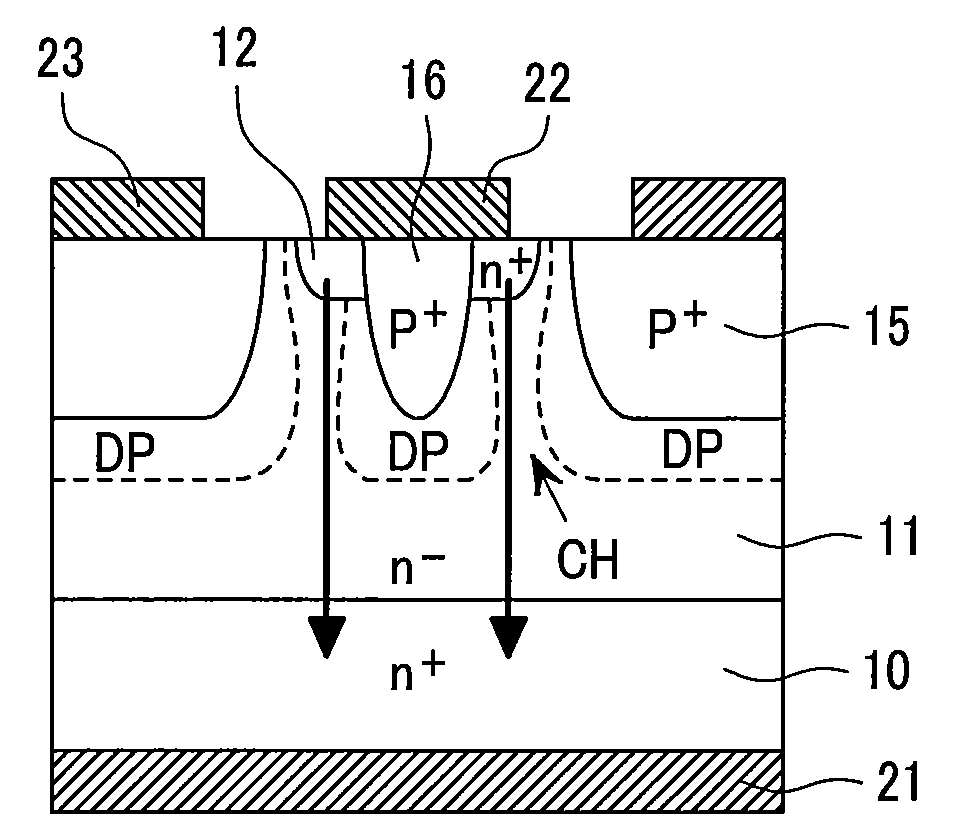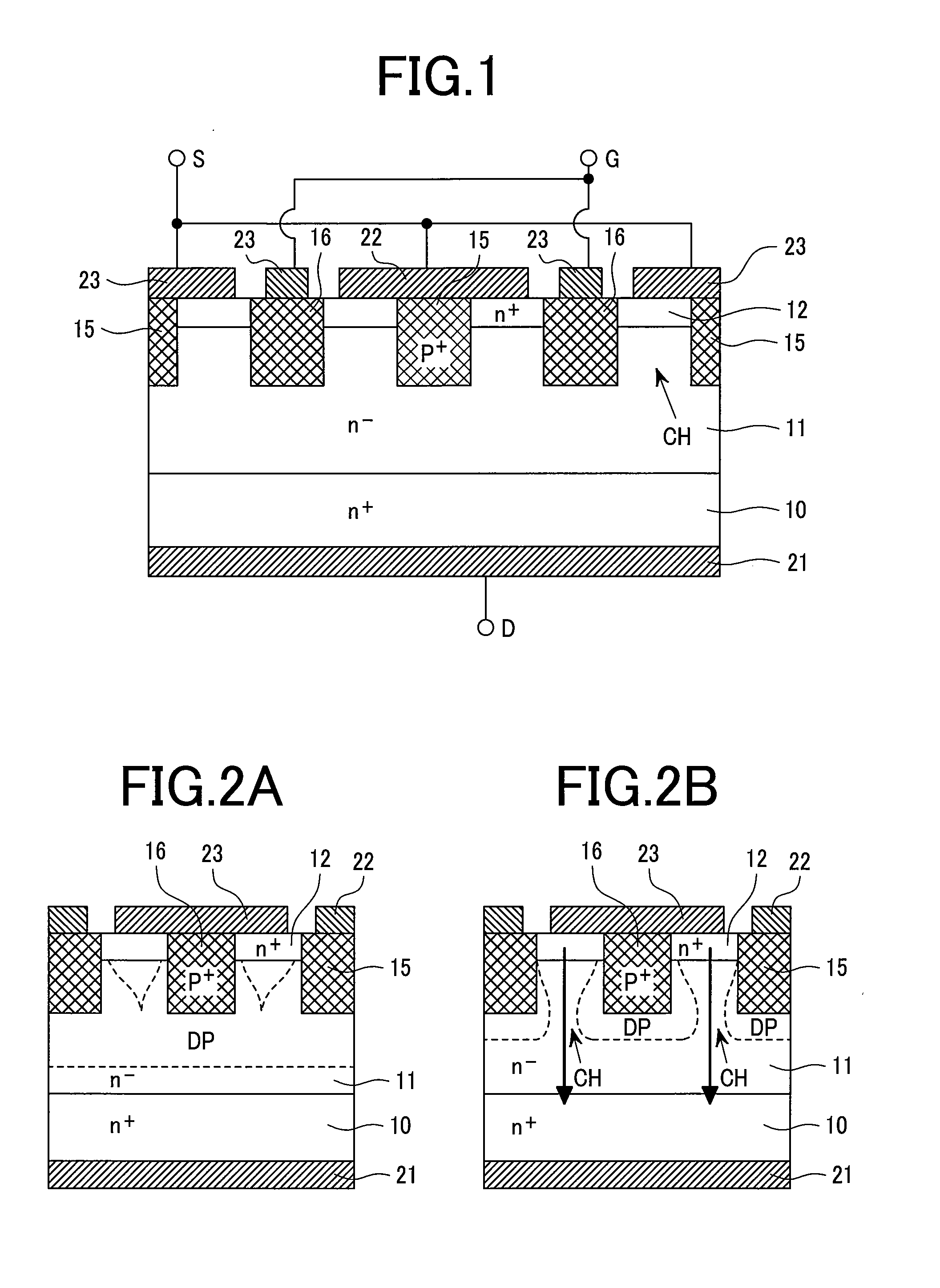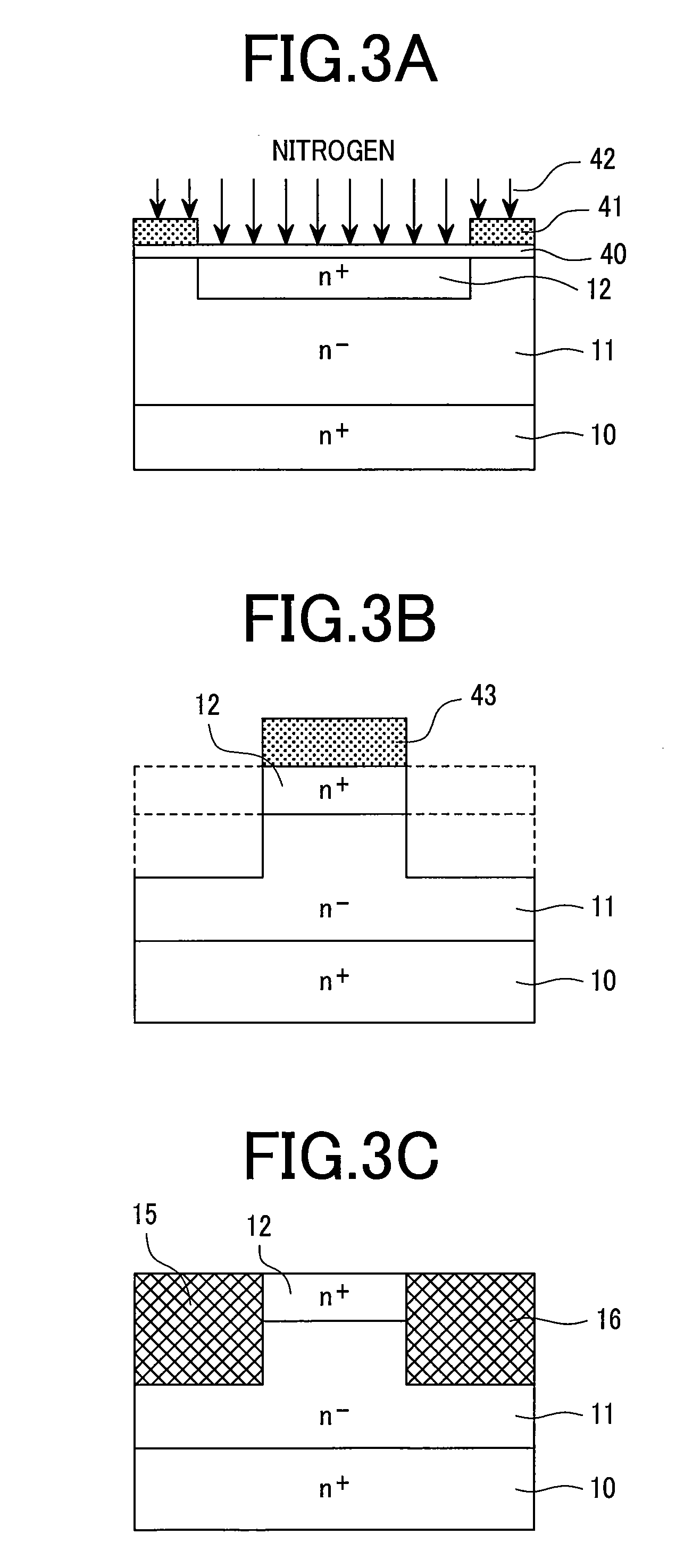Semiconductor device
a technology of semiconductor devices and diodes, applied in the direction of semiconductor devices, basic electric elements, electrical equipment, etc., can solve the problems of reducing dimensional to a package size, increasing the cost of connecting diodes, etc., and achieves the improvement of drain current, channel width, and saturation drain current.
- Summary
- Abstract
- Description
- Claims
- Application Information
AI Technical Summary
Benefits of technology
Problems solved by technology
Method used
Image
Examples
first embodiment
[0031]FIG. 1 is a cross-sectional view of a JFET, showing a first embodiment of a semiconductor device according to the present invention. In the first embodiment, construction that includes trench grooves filled with p-type polycrystalline silicon (hereinafter, referred to p-type poly-Si) is employed for a p+ gate region 15 and a p+ emitter region 16. FIGS. 3A to 3F are cross-sectional structural view schematically showing the process steps of forming the JFET of the first embodiment. These process steps are described in order below.
[0032]As shown in FIG. 3A, on an n+ SiC substrate 10 is first formed an n− SiC drift layer 11 (2×1016 cm−2 in concentration and 6.5 μm in thickness), on which is then formed an oxide film 40, and on which is further formed an ion implantation mask material 41. Next, the ion implantation mask material 41 on the oxide film 40 is patterned and nitrogen ions 42 are implanted to form an n+ SiC source 12 (1×1020 cm−2 in peak concentration and 0.25 μm in thick...
second embodiment
[0041]FIG. 4 is a cross-sectional structural view of a JFET, showing a second embodiment of a semiconductor device according to the present invention. The first embodiment uses the p-type poly-Si of the same concentration to fill in the entire trench. To prevent malfunctioning during switching, it is desirable that even in a normally-off state, a negative voltage be capable of being applied to the gate, and reliability of the source-gate withstand voltage needs to be guaranteed. In the present (second) embodiment, therefore, sidewalls of a channel that come into contact with an n+ source 12 of a poly-Si filler are formed as low-concentration sections 152, 162 (concentration: 2×1017 cm−3), and bottom sections of the channel, as high-concentration sections 151, 161 (concentration: 5×1019 cm−3).
[0042]This makes it possible to ensure a desired source-gate withstand voltage and to improve “off” performance. However, since direct contact of an electrode to the low-concentration poly-Si 16...
third embodiment
[0043]FIG. 5 is a cross-sectional structural view of a JFET, showing a third embodiment of a semiconductor device according to the present invention. To realize a high withstand voltage with a pn junction formed up of p-type poly-Si 163, 153 and n-type SiC, the poly-Si requires a concentration from a level slightly below 1020 cm−3 to an order of 1020 cm−3. In this context, the present embodiment is constructed to achieve a high withstand voltage at a poly-Si concentration of an order of 1018 cm−3, and has a p-type SiC layer 17, 18 at bottom sections of trenches and at sidewalls of each trench. The p-type SiC layers 17, 18 are 1×1018 cm−3 in concentration and 0.2 μm in thickness. The trenches in this case are 1.0 μm spaced and have a width of 1.0 μm and a depth of 1.3 μm. This trench structure renders a high withstand voltage of 750 V achievable without generating a high electric field in the poly-Si 163, since a depletion layer from a drain side of an n− drift layer 11 stays inside ...
PUM
 Login to View More
Login to View More Abstract
Description
Claims
Application Information
 Login to View More
Login to View More - R&D
- Intellectual Property
- Life Sciences
- Materials
- Tech Scout
- Unparalleled Data Quality
- Higher Quality Content
- 60% Fewer Hallucinations
Browse by: Latest US Patents, China's latest patents, Technical Efficacy Thesaurus, Application Domain, Technology Topic, Popular Technical Reports.
© 2025 PatSnap. All rights reserved.Legal|Privacy policy|Modern Slavery Act Transparency Statement|Sitemap|About US| Contact US: help@patsnap.com



